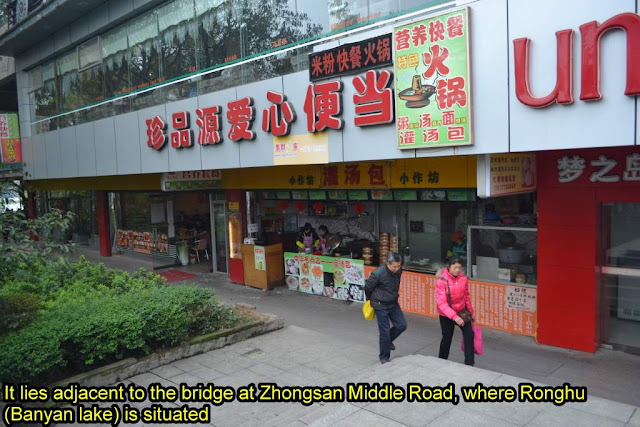Guilin has greater dining options compared to Yangshuo. However, I did not seek them far and wide for my meals. I would just enter a restaurant if I fancied it. Most of the time, I dined near Zhongsan South Road, where I put up accommodation at Happy Hotel.
One of my favourite restaurants was right behind Happy Hotel. The food was excellent and cheap. While in Guilin on the eve of my departure, I had hoped to have my last meals there but it was closed. On the last day in Guilin, I had wanted to take my breakfast there but it had not opened for business when I checked out from the hostel.
One of my favourite restaurants was right behind Happy Hotel. The food was excellent and cheap. While in Guilin on the eve of my departure, I had hoped to have my last meals there but it was closed. On the last day in Guilin, I had wanted to take my breakfast there but it had not opened for business when I checked out from the hostel.
While walking out of Jinjiang Princes Palaces and Mausoleum, I saw this hole-in-the-wall on the inside entrance of the wall surrounding the park. It was around lunch time at about 12:30 p.m.
There were quite a number of restaurants on the same row of shops as Happy Hotel where I stayed. Just a few shop lots away were these two restaurants.
One of my favourite Chinese food is Dim Sum. I chose dumpling at Seven Star Park and also at a Dim Sum/ dumpling restaurant adjacent to the bridge along Zhongsan Middle Road leading to Ronghu (Banyan Lake).
In Papua New Guinea (PNG), the northern Chinese version of the dumpling was not that good. I was hoping that dumpling in China, and in this case, Guilin, would be better. I was disappointed.
In Papua New Guinea (PNG), the northern Chinese version of the dumpling was not that good. I was hoping that dumpling in China, and in this case, Guilin, would be better. I was disappointed.
The claypot rice prepared at this restaurant along Zhongsan South Road in Guilin was different from the one which I ate in Yangshuo a few days later. The method of preparation was different. In Guilin, the claypot rice comes with some meat, sausage and an egg. For the side dish, you select and mix the pre-cooked food from a few trays displayed at the food counter.
My first meal in China was Guilin Mifen (Guilin rice noodle). It was the most popular breakfast meal in this region. Therefore, I took it on myself that my last bowl of meal would also be Guilin Mifen, before I leave Guilin.




































































